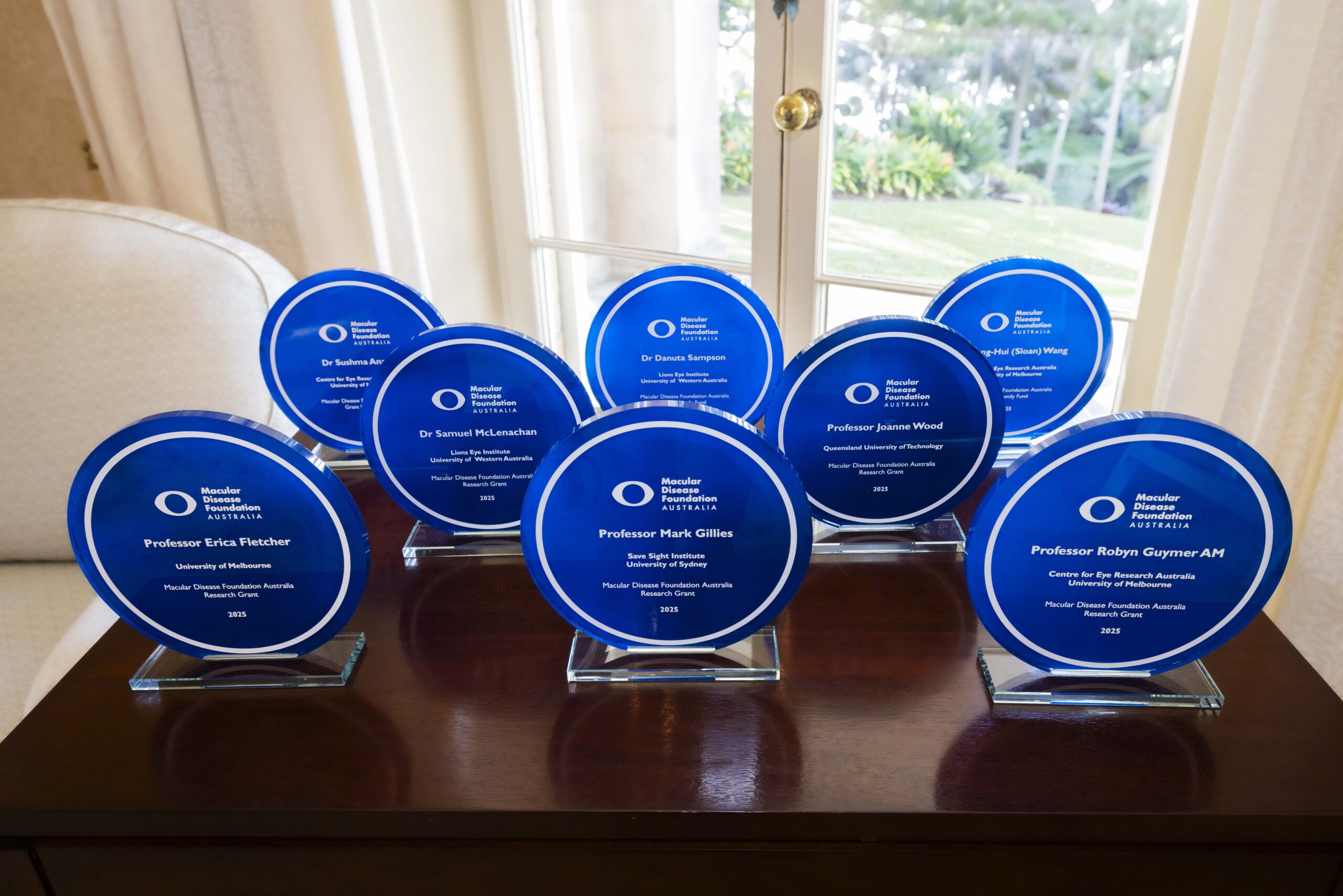The snowball effect of MDFA’s Research Grants Program
A years-long collaboration between some of Australia’s leading experts in stem cell biology, ophthalmology, and computational biology has produced a genetic roadmap for age-related macular degeneration (AMD) that could be a gamechanger for the discovery of novel treatments.
And it would not have been possible without the generous support of our macular disease community.
Professor Alice Pébay from the University of Melbourne, said without the funding from MDFA’s Research Grants Program in 2018, the cross-disciplinary project would never have got off the ground.
“MDFA understands the fundamental importance of investing in national grassroot research for supporting innovative and impactful research,” Prof Pébay says.
That early funding by MDFA led to further research grants including from the Ophthalmic Research Institute of Australia, the National Health and Medical Research Council and the Medical Research Future Fund.
A model for therapy development
The study, recently published in the prestigious international Nature Communications journal, was a collaboration between experts in stem cell biology, ophthalmology, genetics, and computational biology.
The researchers used patient skin samples to generate a special type of stem cells, called induced pluripotent stem cells (iPSCs), and guided those to become cells of the retina that are affected in AMD.
In these cells, they analysed how the genetic features of cells from patients compared to those of control individuals. In doing so, they uncovered novel genes and pathways most likely involved in geographic atrophy, or late-stage dry AMD. Their approach also provided a new experimental model that could be applied to the study and therapy development of other complex diseases, such as glaucoma and dementia.
“We still have a limited understanding about AMD progression, partly because of the lack of reliable models allowing us to study the disease.
“We hope to overcome that by guiding stem cells to become the retinal cells impacted by AMD. In effect, we aim to create a ‘biopsy in a dish’.
“What we do is… we take a piece of skin from an individual, and then we turn it back in cell’s time to become a stem cell, that is a cell that can become every cell type of the body. By doing so, we can then guide the cells to become any cell type of interest, including the cells that are affected in AMD,” explained Professor Alice Pébay.
“So, for diseases of eyes, it is very interesting because we can make the cells affected in the eye from their own genetic background, without having to obtain a physical biopsy from the back of the eye of an individual.
The advantage of this process – apart from being able to get a biopsy from the eye without an invasive procedure – is that we can study the cells that die in AMD directly. It is much more effective than studying markers in blood, for example.”
“The model is good to work for monogenic diseases (that is, diseases involving a single gene) but prior to our work, it had not been proven that these cells could efficiently be used for the modelling of more complex diseases like AMD.
“AMD is not due to a mutation in a single gene, but it involves multiple genetic risk variants and also the environment, for instance ageing, our diet and whether or not we smoke.”
“We took the calculated bet that we could model AMD in a dish using patient stem cells, by using a large number of patient stem cell samples, as opposed to only a few as we normally do for monogenic conditions. We believed this could help us reflect the genetic complexity observed in patients with AMD.”
Prof Pébay said they used skin samples from 60 patients with AMD and 60 patients without, created iPSCs, then differentiated them to the retinal cells affected in AMD and compared the two cohorts.
Exciting discoveries
She said they observed genetic differences between the cohorts, some of which were already known. This served as confirmation that the research was on track. It also gave the researchers confidence that the experimental model was powerful enough to detect new leads.
“As we observed new differences between the patients’ and controls’ samples at the genetic levels, we looked at the proteins in cells, which are the “products” made from the expression of genes. When a cell decides that a gene is important it will produce its corresponding protein. And again, we observed differences between those two cohorts at the protein level. In the differences we observed, the mitochondria (known as the powerhouse of the cells) seemed to be working differently between people with and without AMD. We took the next step of looking at the functions of the mitochondria themselves and again there were differences in retinal cells that came from patients with AMD.
“That is what is very important. Once we find ways to make those mitochondria work better, it might allow us to delay the progress of disease.
Encouraging creativity in research
“Without the MDFA funding, we could not have started the work. Without the funding, this research would not have eventuated.
“Research funding is limited, and Government-allocated grants must be used for funding of outstanding Australian research into many different diseases, from cancer to heart disease, and other conditions. So you can imagine how difficult it has become to get funding for eye conditions. Philanthropy – especially today – plays a fundamentally important role in supporting research, and that is exactly what happened here.”
Prof Pébay praised the macular disease community for their ongoing support of research.
“Donating is really important, and so is raising awareness on the importance of research for a healthier society. When you learn about research and you understand its importance, you can convey that to your friends and families and colleagues. This collective awareness of the importance of research ultimately influences the requirement for strong research as a pillar of our healthy societies.
“We must encourage people who are creative to do medical research and understand there are lots of questions that need answers.
“To be creative, to value science and research, this will have impact in the long term.
“We all have a role to play.”
Posted 24.02.2023















